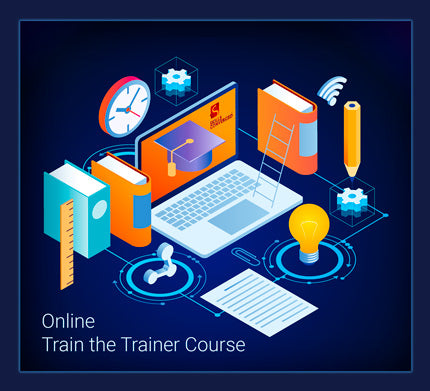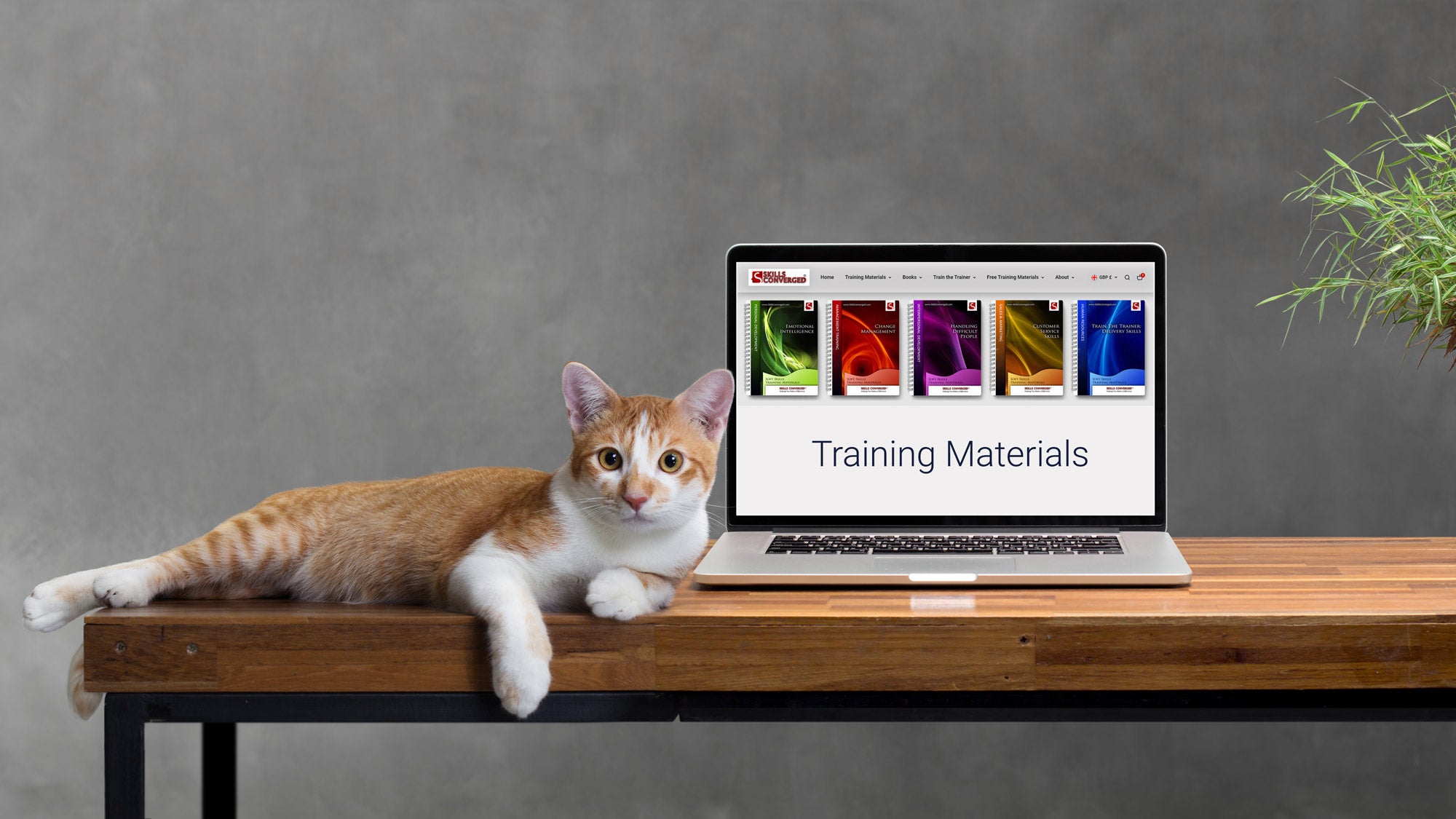Experiential learning is learning by doing and it is an extremely important paradigm in educational psychology. It is in contrast with academic learning. The modern theory of experiential learning was developed in the 70s by David Kolb, who in turn drew heavily from John Dewey and others.
Experiential learning focuses on learning for the individual. As an example, imagine if a learner was expected to learn a software tool by reading a book. The learner must rely on others’ understanding of the topic and use the abstract medium of a book to learn it. In contrast, with experiential learning, you place the learners behind computers that have the software and get them to experience the tool first-hand. This way the learner can observe, experience, discover and reflect on what is happening. The process helps the learners to acquire hands-on experience directly through interaction and problem solving.
What Is Kolb’s Experiential Model?
Kolb presented the now infamous experimental learning model as follows:
Experiential Learning Model:
- The learner has concrete experience with the content that is taught.
- The learner reflects on the experience and compares this to prior experience.
- The learner develops new ideas based on reflection and comparison with previous experience.
- The learner acts on the new ideas formed by experimenting in an experiential setting.
Kolb’s Experiential Learning Model
This loop then repeats as experimentations lead to yet more new experiences which are then reflected on and so on.
The power of the experimental model is in the “reflection” part. An effective experiential setting should provide ample opportunities for learners to reflect and conduct self-examination.
A great example to see how experiential learning can work in practice is the Atelier Method. This is a proven technique used to train artists for more than a century leading to some of the most spectacular works of art in history.
Why Experiential Learning Matters
Experiential learning encourages individuals to use their own initiatives when studying, find out what works for them and finally evaluate their own performance as they go through an experience. Because a learner is encouraged to get involved in the subject matter rather than passively consume information, he is more likely to learn and retain that learning experience in the future.
Experiential learning requires the learner to have “intention to learn”. Therefore, it is critical to convince the learner about the usability of the content being taught before you embark on teaching it. It is important for adult learners to know why they need to know, before they can be taught. With experiential learning this is even more important because much of the learning is self-directed. Learners must do the leg work by experimenting, reflecting, analysing and forming new theories of how things can work. This requires effort and no adult will go through it unless convinced that it is useful for them.
What Is the Difference Between Experiential Learning and Traditional Classroom Techniques?
Traditional classroom techniques are mainly lecture driven with large number of learners present in a class. The learners are effectively expected to listen and understand. Numerous studies show that there can be several problems with the traditional classroom lecture-based teaching method:
The Learning Experience Is Slow
- The trainer may have to cover a topic several times before it is fully understood. This can be wasteful.
Traditional Lecturing Puts More Pressure on the Trainer than the Learner
- The trainer does most of the work, most of the talking and most of the thinking, while the learners passively listen. Many studies show that human attention span is much shorter than the duration of a typical class. Learners are likely to drift, daydream, fall behind or simply lose interest in the topic.
Information Exchange Is One-Directional
- The information flows form the trainer to the learners. Learners are not encouraged to learn from each other, and the trainer doesn’t have an opportunity to realise if learners struggled or discover which areas they need to work on more.
Learners Are All Treated the Same Way
- Since exchange is one-directional, the trainer cannot know much about the learners’ preferences for learning. All learners are treated the same way irrespective of their learning styles and capabilities, which leads to poor results.
How to Apply Experiential Learning to Corporate Training
So, what does all this mean for your training courses? To be an effective trainer, you want your learners to gain knowledge not only from you, but also on their own, from other learners and the environment you created for them. You want to send them on a journey of discovery, reflection and experimentation.
At its core, this requires two critical components: A skilled facilitating trainer and an immersive environment.
Let’s explore the strategies that you can employ for each:
What Are the Characteristics of an Immersive Experiential Environment?
Consider applying the following to make the environment suitable for experiential learning:
Match the Training Environment to the Target Environment
- Place the learners in an environment which is as close as possible to the final environment where they would be applying the new skills. For example, teach students about art in an art studio full of painting and drawing tools rather than in a sterile classroom devoid of any art tools or creative content to get inspired by.
Appeal to All Senses
- Create an environment that appeals to all five senses where possible or relevant. For example, if smelling some ingredients is important, make sure learner can experience it. The same goes with controlling the sounds and visuals. Pay attention to tactile sensations as this can boost learning and recall, especially for those that prefer a hands-on learning style.
Create Interactions
- Setup the environment in a way that encourages learner interaction. You want them to learn from each other as well as from you. A classroom style configuration where everyone faces the trainer discourages this interaction. Use U configuration or islands instead.
Fill Up the Environment with Related Content to Explore
- Provide ample materials (both physical and digital) for learners to explore. Recall from the experiential learning model that learners must engage in reflective observation. This requires exploration which your environment and exercises must support. There must be something for them to explore. Don’t put learners in an empty room and expect them to go through a successful experiential learning process.
Help Them Experiment
- In the model, once learners have reflected and conceptualised an idea (reflective observation and abstract conceptualisation), they want to test it (active experimentation). This means experimenting to see if their ideas or theories holds. You must setup your environment in such a way that helps with this experimental stage. Provide tools, supplies, props, materials, software, internet access, etc.
"Tell me and I will forget, show me and I may remember, involve me and I will understand”
Confucius
How to Be a Facilitating Trainer
Being a facilitating trainer requires practice to get right. What makes it difficult is that as a topic expert, the temptation is to simply explain it by talking and then some more talking. This quickly becomes a one-directional method of teaching; it is then easy to end up lecturing.
In contrast, it is much harder to think of leading questions and examples that you can use to help learners progresses through the experiential loop.
There is a whole methodology behind being a facilitating trainer so only a summary of techniques is presented here. For more guidelines see how to design a course and how to deliver training.
Use the following to become a facilitating trainer and apply the experiential model of learning:
- Get them excited. Make learners enthusiastic about the topic to create commitment to self-learning and self-exploration.
- Show learners why they need to learn. Show how learning and discoveries can help them in their roles.
- Allow learners to explore the subject in their own time. Encourage learners to explore and discover on their own after your initial guidelines and instructions.
- Ask leading questions to help learners gain insights about a given topic. You must formulate these questions in advance since it is quite difficult to come up with them on the spot.
- Create novel exercises that appeal to all senses. This makes the experience more memorable and hence more useful in the future.
- Make them move. Encourage learners to get off their chairs and get them to use interactive tools and props. This in turn helps them use more senses making the experience more immersive.
- Increase interactions. Use exercises and roleplays to get the learners interact with each other systematically. It is important that they know what they are supposed to do. Don’t just say, “Go find out about X and then come back and discuss it with each other”. You need to use more creative solutions to increase curiosity, excitement, commitment and a sense of problem solving.
- Reduce monotone lecturing. Replace it with materials that constantly force learners to think and evaluate their current knowledge about the topic. Help them challenge the established norm in their own minds and break free from what they know as a way of learning. This will then set the stage for them to receive and adapt new discoveries.
- Encourage problem solving rather than passive listening. It cannot be experiential learning if they are not involved and actively thinking.
- Praise learners for their achievements. This encourages them to put more effort into exploration, reflection, analysis and experimentation as they go through the experiential learning loop.
The best and perhaps the only way to master facilitation skills is by practicing it in a course. You can attend my 2-Day Train the Trainer: Core Skills course in the UK to master the skills in an immersive environment. The course is packed with carefully designed controlled exercises that will allow you to become the best trainer you can be. Alternatively, you can access the online version of this train the trainer course and go through it at your own pace
What Is the “5-Step Experiential Cycle”?
Building on Kolb’s research, Pfeiffer and Jones devised the “5-Step Experiential Cycle” (Pfeiffer and Jones 1985). This model comes in 5 stages:
The 5-Step Experiential Cycle
Exploration: “Do it”
Concept:
- Learners perform an activity with no support from the trainer.
Examples:
- Experimentation with something
- Exercises and roleplays
- Problem solving
- Using software on their own; giving it a try
- Making products
Guidelines:
- Learners must be doing something.
- Expect that the task maybe unfamiliar to some learners and that they may stumble. Make sure to create a safe environment for experimentation.
- Ideally the task should be slightly challenging in order to put learners out of their comfort zone. You want the exploration to lead to reflection, which means they must feel they are being challenged.
Sharing: “What Happened”
Concept:
- Learners share results and observations publicly. This stage is also known as publishing.
Examples:
- Group exercises where learners get to share what they went through.
- Making observations, recording and sharing them.
Guidelines:
- Encourage learners to share and discuss their feelings freely.
- Acknowledge the ideas that are being generated.
- Ask a series of questions to further help learners examine what they went through:
- “What did you do?”
- “What did you experience?
- “What happened?”
- “What was difficult?”
- “What was easy?”
- “What worked well?”
- “What didn’t work?”
Processing: “What’s Important?”
Concept:
- Learners analyse and reflect on the experience.
Examples:
- Exercises where learners discuss and reflect on their experience.
- Discussions where learners share their personal experience.
Guidelines:
- Encourage the group to look for patterns of experiences as discussions unfold.
- Get them to share any similar experiences they might have had in the past.
Generalising: “So What?”
Concept:
- Learners generalise what they have experienced and reflect on it by connecting it to real world examples.
Examples:
- Exercises that help bring real-world scenarios to surface so that learners can compare them to what they just went through.
Guidelines:
- Get learners to look for trends and patterns. Help them see what can be generalised.
- Encourage learners to see how what they have experienced relates to other experiences in their lives.
Application: “Now What?”
Concept:
- Learners apply what was learned to a different situation.
Examples:
- Exercises that help learners apply what was learned to other areas. These could be project based, discussions or mini exercises.
- Discussions on how they can do something differently in the future.
Guidelines:
- This is your chance to get the learners understand and plan how they can use what they’ve experienced, reflected on and learned from in their roles.
As you can see this model is simple and elegant, yet it is quite powerful when consciously used in the context of training.
You may recognise this model from the catchier version of it, “What, So What, Now what” that is advised when you want to explain something or give presentations.
What > So What > Now what
How to Apply the “5 Questions” Model
With facilitation training you want learners to reflect and think in new ways. Is it possible to achieve this with a system? Building on the experiential learning cycle, researchers Jacobson and Ruddy created a practical questioning method (Jacobson and Ruddy 2004). The questions help facilitators to structure their leading questions in a way that promotes experiential learning.
Their “5 Questions” model is as follows:
5 Questions Model
- Did you notice?
- Why did that happen?
- Does that happen in life?
- Why does that happen?
- How can you use that?
If you want to learn more about experiential learning check David Kolb’s website on this topic.
How Experiential Learning Is Used in the Development of Our Training Materials
At Skills Converged, we aim to design our courses and training materials with experiential learning in mind.
Our aim is to satisfy two critical needs:
- Maximise training and knowledge transfer for learners for a given time.
- Reduce the pressure on trainers and make it as easy as possible for them to pick up and deliver the content, while satisfying the above need.
When developing our training materials, we pay a lot of attention to these two needs and carry out various tests to make sure they are satisfied. For example, we consider the following:
Learning Is Centred on Experience
- All topics are followed by extensive exercises to encourage the delegates to immediately try the new skills, unlearn bad habits and progress into replacing them with new techniques.
Training Materials Are Designed to Maximise Exercises and Interactions
- Extensive trainer guidelines and scripts are provided to help trainers constantly engage the learners, keep them interested and to help them question their current assumptions and skills. This is an effective way in teaching soft skills since most people develop their skills through trial and error as they grow and may never question many of their behaviours. The first step in learning a new soft skill is to understand and accept that they might have been doing it wrong so far.
Based on experiential learning, we have established proven design patterns used in all our courses for maximum consistency and efficiency. Of course, we constantly look for ways to improve our training methods. We have the privilege to benefit both from direct learner feedback in our own course delivery as well as trainers’ feedback when they use our training materials to deliver their own courses. Together, this allows us to produce state-of-the-art training products.
References
Jacobson, M. & Ruddy, M. (2004) Open to outcome (p. 2). Oklahoma City, OK: Wood 'N' Barnes.
Pfeiffer, J.W. and Jones, J.E. (1985) “A Handbook of structured experiences for human relations training”, University Associates.

About the Author
Dr Ethan Honary is the founder of Skills Converged Ltd. A training consultant, researcher, author and designer with an aim to help trainers worldwide to improve training delivery and course design.
Table of Contents
What Is Kolb’s Experiential Model?
Why Experiential Learning Matters
What Is the Difference Between Experiential Learning and Traditional Classroom Techniques?
How to Apply Experiential Learning to Corporate Training
What Are the Characteristics of an Immersive Experiential Environment?
How to Be a Facilitating Trainer
What Is the “5-Step Experiential Cycle”?
How to Apply the “5 Questions” Model
How Experiential Learning Is Used in the Development of Our Training Materials
Course Design Strategy
Available as paperback and ebook
Online Train the Trainer Course:
Core Skills
Learn How to Become the Best Trainer in Your Field
Train The Trainer Book
Available as paperback and ebook
Explore Topics
Longform Train the Trainer Guides
All In-Depth Articles
CPD Accredited
Online Train the Trainer Course: Core Skills
Learn How to Become the Best Trainer in Your Field
Full Course Details
How to Reference This Article
Honary, E. (2019) "How to Apply Experiential Learning", Skills Converged. Retrieved from: https://www.skillsconverged.com/blogs/train-the-trainer/how-to-apply-experiential-learning












Leave a comment
All comments are moderated before being published.
This site is protected by reCAPTCHA and the Google Privacy Policy and Terms of Service apply.